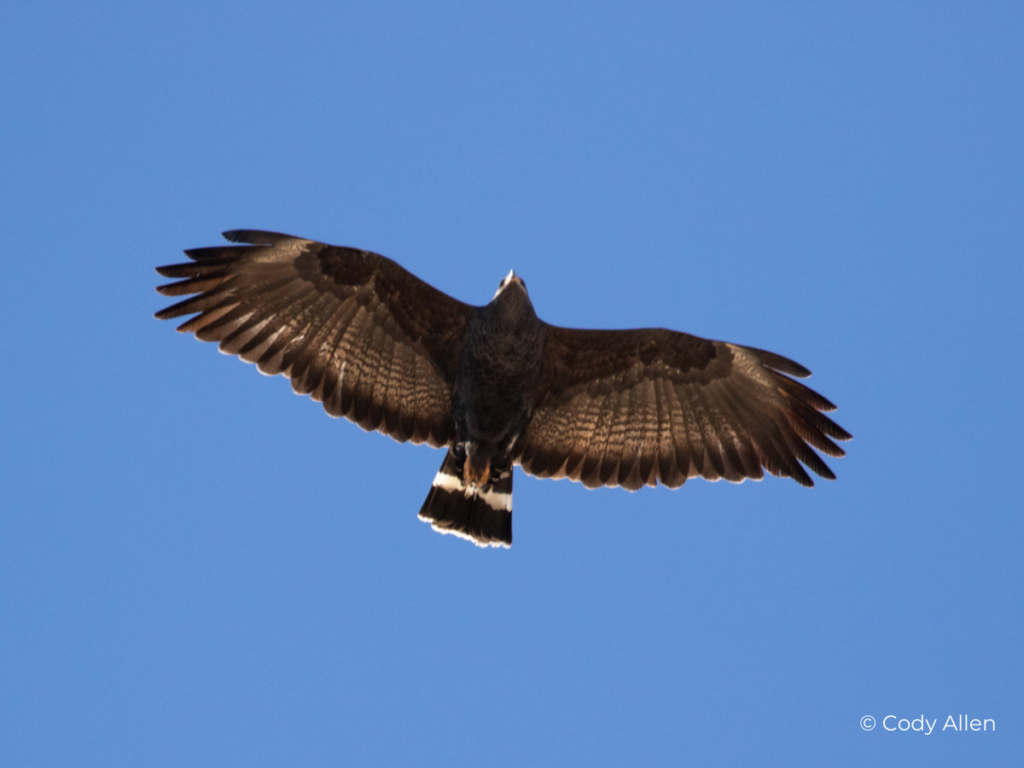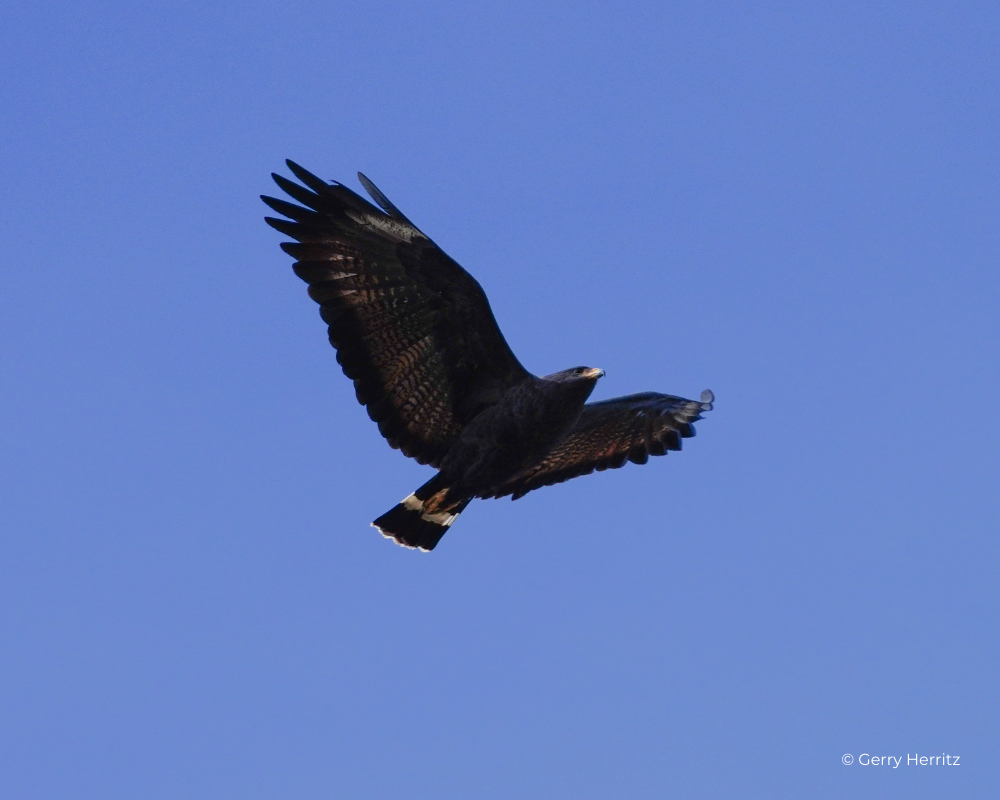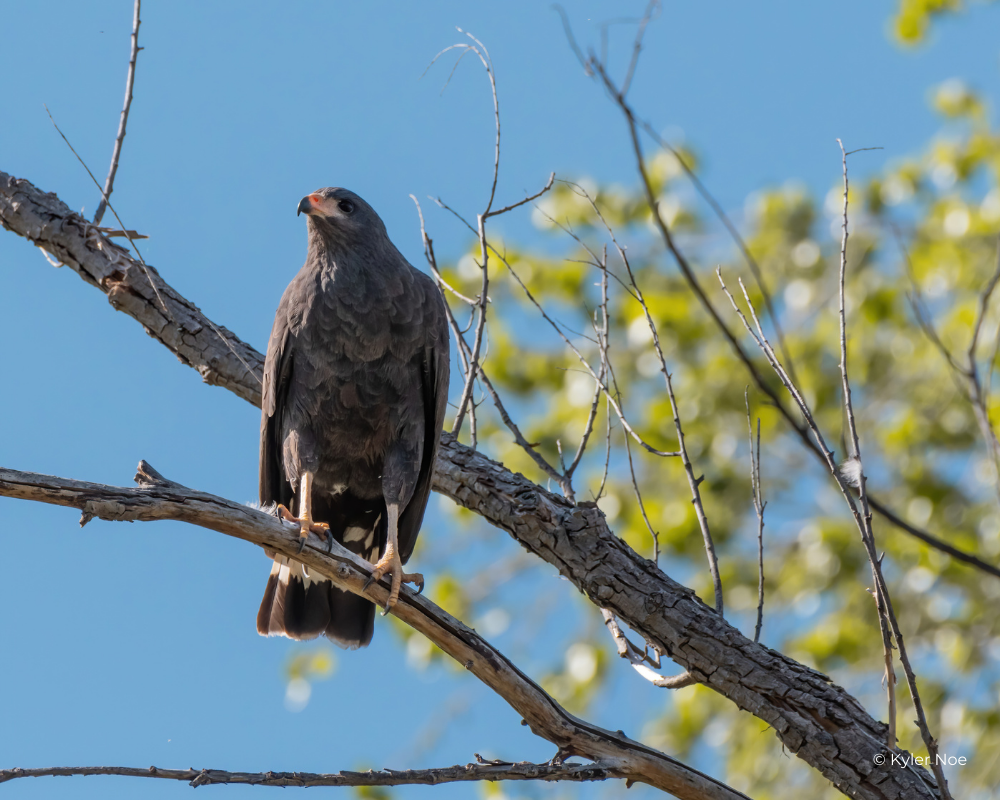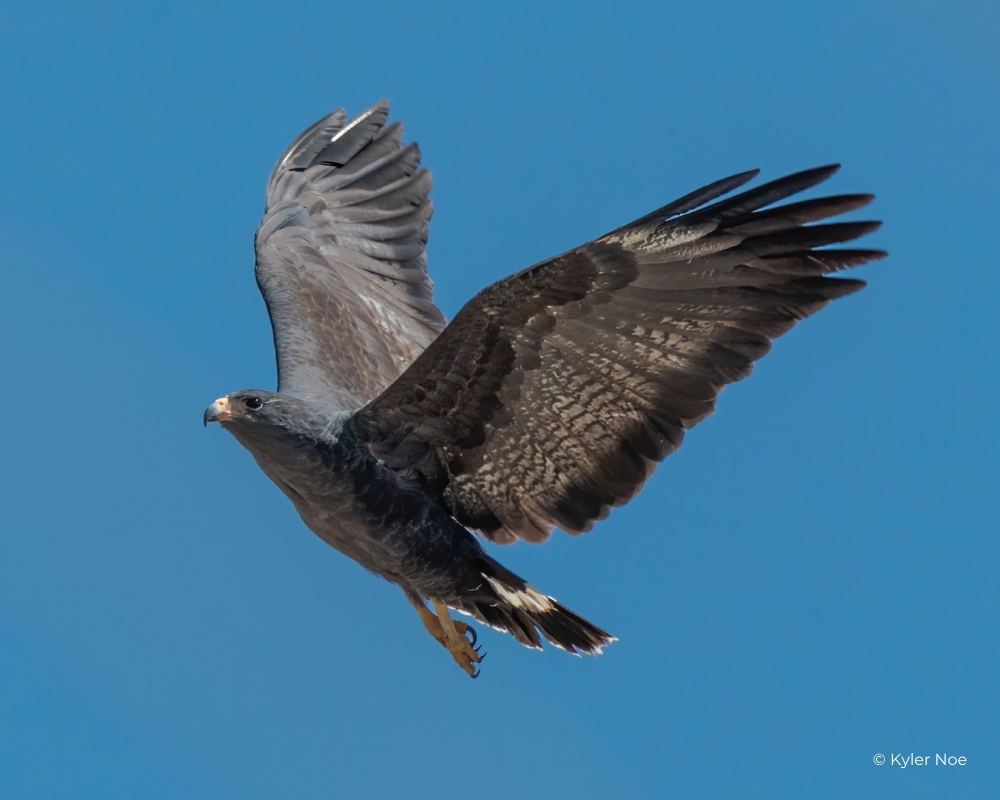Overview
The Common Black Hawk is a raptor of the tropics, widespread there but barely reaching the US in the Southwest and mostly in Arizona. Small populations breed in New Mexico and southwestern Utah, and some birds are found in south Texas in the winter. The Common Black Hawk is generally scarce, and it can be hard to find since it lives along riparian corridors and spends much of its time perched, soaring briefly only in the mornings. It preys mainly on amphibians, reptiles, and fish, which are spotted from a low perch along a stream. They even wade in shallow water! The Common Black Hawk’s call is similar to the Osprey, giving a series of short whistles, rising at the end, “whi-whi-whi-whi-whée whée whée.”
The Common Black Hawk is distinctive but can be confused with a Black Vulture in flight and a Zone-tailed Hawk when perched. Black Vultures share a similar shape, but has pale outer primaries, narrow-based black tail lacking a white band, a smaller naked head, and flies with wings held slightly above the body. Common Black Hawks closely match the Zone-tailed Hawk in plumage, but their shape in flight couldn’t be more different. Common Black Hawks have a stocky build, with broad wings and a short tail, while Zone-tailed Hawks are lengthy, with long, narrow wings and a long tail. When perched, they are quite similar, but Common Black Hawks have longer legs, bare yellow facial skin, and a less sharply hooked bill. When perched, note that the Common Black Hawk’s wing tips nearly reach the tail tip, whereas the wingtips of a Zone-tailed Hawk wall short of the tail tip.




